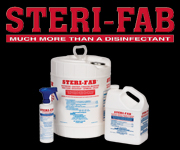Administrators researching options for new lab spaces will soon realize that the possibilities are truly endless. Designing a new lab space or renovating an existing lab space requires special attention to detail from start to finish.
Each lab will have various new pieces of cabinetry, equipment, and furnishings to go along with a specialized mechanical system, new plumbing, and a network of electrical requirements. Many of these elements require straightforward decisions, but fume hoods are one of the only pieces of equipment found in new labs that have an impact on almost every other decision. If certain processes that require a fume hood are going to be performed, getting the fume hood integration right is a top lab safety design consideration. This article covers responsibilities in lab planning, important items to highlight when determining where to place a fume hood in a lab, and types of fume hoods that can meet the specific needs of different types of labs.
Chemical Hygiene Plan
When developing a strategy to accommodate the safety needs of a laboratory, the Chemical Hygiene Plan (CHP) is the ideal place to start. According to the Code of Federal Regulations (specifically CFR 29 1910.1450), the Chemical Hygiene Plan is “a written program developed by the employer which sets forth procedures, equipment, personal protective equipment, and work practices that are capable of protecting employees from the health hazards presented by hazardous chemicals when used in that particular workplace.” The CHP is required by the Code of Federal Regulations “where hazardous chemicals… are used in the workplace” and, as the definition states, is the responsibility of the facility. This legally-required document is developed by performing a thorough risk assessment for the practices in a lab, and it concludes with specifics needed for all laboratory equipment, including fume hoods, to ensure the safety for the laboratory personnel. The CHP will likely contain information discussed in the following sections and will be an excellent resource for any lab as a robust safety document.
Importance of Fume Hood Placement
The placement of a fume hood in a lab can significantly impact its overall layout. Fume hoods are safety devices that offer protection to laboratory personnel who are handling potentially dangerous fumes, vapors, and aerosols; the fume hoods do their work by simply moving air through the hood interior. For this reason, doorways, high-traffic walkways, supply air registers, and even the placement of other hoods must be considered when placing a fume hood. All these factors can affect the level of protection a fume hood can offer.
Exposure Control Technologies, Inc. (ECT, Inc.) published a resource titled Laboratory Airflow Distribution, which is an excellent reference document for anyone planning a lab around the placement of fume hoods. This document highlights several key pieces of information that will allow planners to avoid unnecessary lab space planning problems.
The first consideration is to avoid placing a fume hood next to a doorway. Not only do doors provide a location for high foot traffic, but adjoining rooms are often pressurized differently, so opening and closing these doors can cause complications for a fume hood if it is not placed a safe distance away. The next consideration is that fume hood openings should be a safe distance away from high-traffic aisles. This placement not only creates a safer working environment for any personnel working in the hood, but it also helps avoid exposing fume hoods to turbulent air created by the movement of bodies; such movement could cause the hood to lose containment.
Additionally, every room needs air to be supplied into the space, but air supply registers should be located at a proper distance away from the hood opening. Air from these registers often moves at a high rate of speed and can easily disrupt airflow into a fume hood. Planning for these registers to be placed in more optimal locations will ensure the fume hood is able to contain as designed. Finally, planners need to consider where other fume hoods will be placed in the lab. If two fume hoods face one another, they could compete for air, causing one or both fume hoods to lack access to the air needed to perform safely and effectively. Proper placement of fume hoods and other equipment will help ensure the safety of everyone in the lab.
Fume Hood Types
Determining the proper type of fume hood needed for a new lab space is equally important as determining where it is going to be placed. Different procedures may require different types of fume hoods, based on what is being done in the hood and what materials are handled in them. Selecting the proper type of hood ensures that the users will be safe, that sensitive equipment will be protected, and that the fume hood will last. For certain procedures, such as ones including the use of perchloric acid or radioisotopes, this decision becomes straightforward; labs need fume hoods specialized for those applications. Choosing a fume hood for other types of lab work may require a little more research and consultation.
First, planners need to think of dimensional requirements. These requirements could be determined by the size of a lab or the size of equipment to be placed in the fume hood. Fume hoods are typically very large, tall pieces of equipment that are placed on top of cabinetry, so labs with a short ceiling may require a fume hood designed for smaller spaces. Equipment within a hood also plays a big role in the size of fume hood needed. For instance, for six inches of clearance in the front and back of the equipment is typically needed to promote proper airflow within the interior. If the equipment placed in the fume hood is large, the hood needs to be deep enough to safely house it.
In addition to dimensional requirements, materials of construction are key to having a fume hood that will last. Before deciding on a fume hood, planners should make sure the chemicals being used are compatible with the hood’s materials of construction. For instance, planners for labs using nitric acid should avoid selecting a hood that has an interior composed of coated or stainless steel, choosing a fiberglass polyester or PVC-lined fume hood instead. Improper planning on the material and type of fume hood can lead to a premature need to replace a corroded hood.
Finally, in many lab spaces, emphasis is placed on fume hoods that operate using less air than conventional hoods. These high performance fume hoods can serve many purposes, such as helping a lab meet various sustainability requirements or replacing a hood in an old lab where there are limits on how much air can be exhausted. Labs with these types of requirements will need hoods that can contain contaminants at a high level while having reduced air volume, as other types of hoods may not offer sufficient protection. Every lab is different, so identifying the correct type of fume hood for a lab’s needs will go a long way in providing the safest environment possible.
With all the details to consider, the process of designing a lab to include a fume hood can feel like an uphill battle. After all, the fume hood needs to be properly applied to offer optimal protection to those using it. Getting ahead of the planning by outlining a Chemical Hygiene Plan and defining what a lab needs to be safe is the only way to proceed; this approach will make the process simpler and maximize the safety in the campus laboratory environment.










